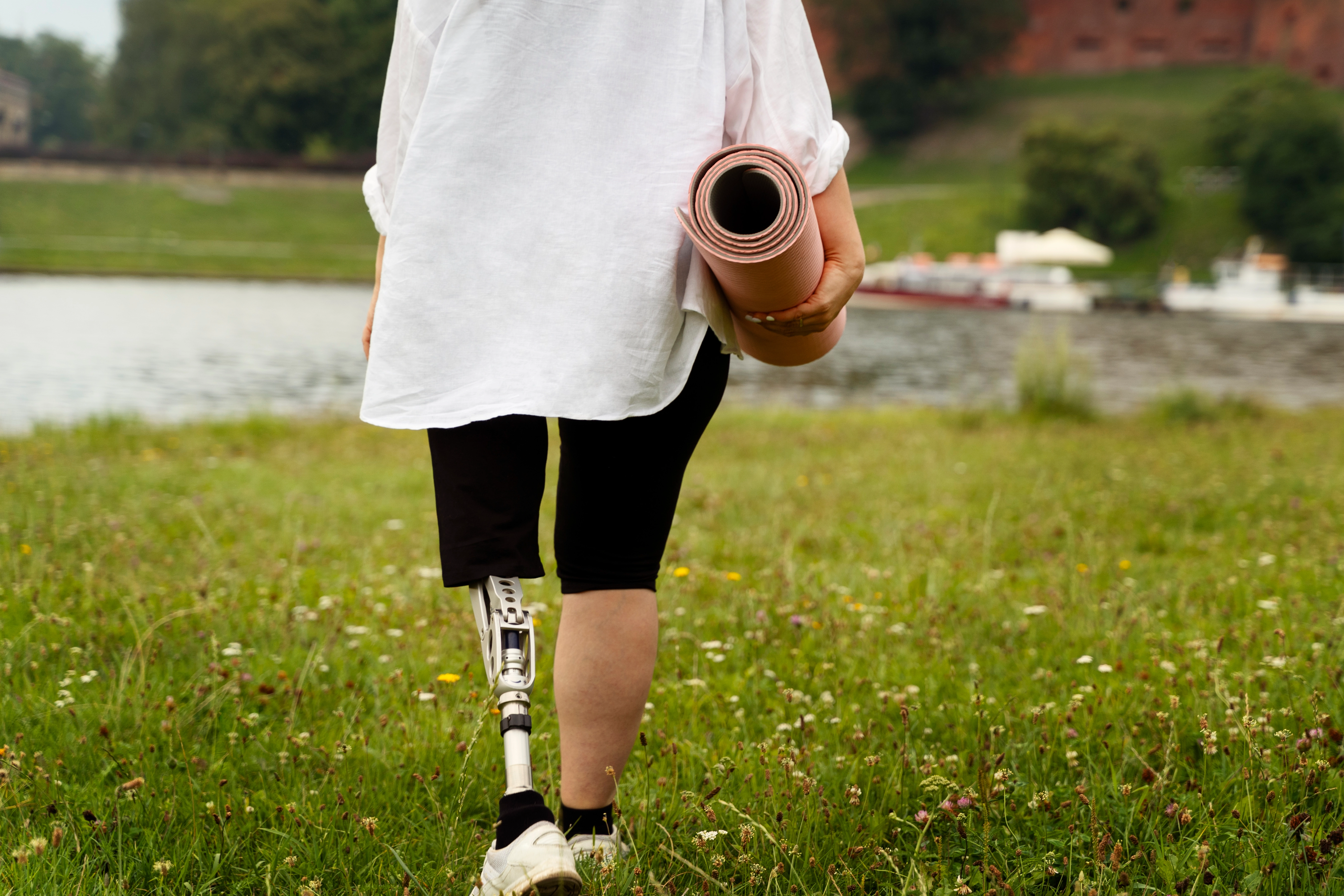FRACTURE/ JOINT HEALTH/ AMPUTEE
This service is designed to help individuals recover and maintain optimal function following injuries, joint conditions like arthritis, or the loss of a limb. Fractures and joint health issues, can significantly impact movement, mobility, and the ability to perform daily tasks, leading to pain and reduced quality of life. Similarly, amputations require a unique recovery process that addresses both physical and emotional challenges, helping individuals adjust to new ways of moving and living. These conditions place significant strain on patients and their caregivers, often requiring long-term support and a tailored rehabilitation plan to promote healing, improve mobility, and restore independence.

Our unique approach
Accelerate Your Progress: Consolidate your weekly therapy sessions and achieve faster results with our intensive approach.
Expert Care at Home: Receive treatment from highly skilled clinicians in the comfort of your own home.
Cost-Effective Solutions: Get the best outcomes while keeping your costs down.
Personalized Rehabilitation: Benefit from a tailored rehab program designed using the latest evidence-based practices
If these resonate with you, our services are the perfect fit!
Benefits of physiotherapy include
Restores mobility and range of motion: Physiotherapy helps stretch, strengthen, and mobilise the area around the fracture to improve flexibility and movement, preventing stiffness or contractures.
Prevents muscle atrophy: Being immobile for a long time after a fracture can cause muscle loss. Physiotherapy provides exercises to rebuild muscle strength.
Improves stability and weight-bearing: Weight-bearing exercises and balance training help improve the ability to bear weight through the affected limb.
Faster recovery: Starting physiotherapy soon after the fracture and surgery can significantly speed up the healing and recovery.
Prevents complications: Regular physiotherapy helps prevent complications like thrombus formation, improper bone healing, and joint stiffness, aiding in regaining pre-injury status.
Psychosocial benefits: Physiotherapy provides encouragement and motivation during recovery, supporting mental health and aiding recovery.
Arthritis rehabilitation:
Physical therapy for arthritis focuses on improving joint mobility, increasing strength, maintaining fitness, and preserving daily function. A physical therapist will develop a personalized exercise plan to enhance flexibility, coordination, and balance. They will teach proper posture, recommend assistive devices, and suggest treatments like braces or hot/cold therapy to reduce pain. Sessions usually last about an hour, with a focus on techniques you can practice at home. Consistency is essential, as regular exercise leads to gradual improvement in strength and overall function.
Goals of Physiotherapy for Arthritis:: Improve joint mobility and function, Increase strength to support joints, Maintain overall fitness, Preserve the ability to perform daily activities.
We create a personalized exercise plan to improve flexibility, strength, coordination, and balance. We will:: Teach proper posture and body mechanics to reduce pain, Show you how to use assistive devices like walkers or canes, Recommend treatments like braces, splints, shoe inserts, and hot/cold therapy, Suggest ergonomic adjustments, such as using supportive chairs or mats, to ease pain and improve function.
What to Expect During a Physical Therapy Session:: Sessions typically last about an hour, focusing on exercises and techniques you can continue at home. Your therapist will help you set clear goals, whether it’s walking pain-free, reaching overhead, or performing daily tasks. Follow-up visits may be scheduled as needed to adjust your program.
Amputee rehabilitation:
Limb amputation is a life-changing event, which has significant effects on physical and psychological well-being. The lower the amputation, the more joints that are spared, the better the potential for a more normal walking pattern with a prosthesis. There are different types of lower limb amputations:
Types of lower limb amputations:: Foot, including toes or partial foot; At the ankle (ankle disarticulation); Below the knee (transtibial); At the knee (knee disarticulation); Above the knee (transfemoral); At the hip (hip disarticulation).
Post-operative care and prosthetic training:: After amputation surgery, our post-operative care prioritizes healing, comfort, and emotional well-being. We focus on wound care, pain management, safe transfer techniques, and improving mobility, strength, and balance. Once your residual limb heals, we shape it for a prosthetic using compression therapy and manual techniques, followed by custom prosthetic design and fitting. Our comprehensive prosthetic training helps you adapt to your new limb, teaching you how to care for it, manage discomfort, and regain independence in daily activities.
Our service includes:: Strengthening program, Residual limb care, Bed and wheelchair transfer practice, Balance and coordination training, Ambulation with assistive devices without a prosthesis, Donning and doffing of the prosthesis, Gait training.
